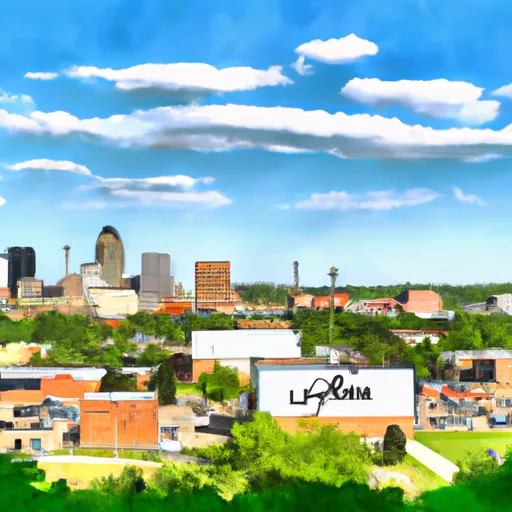-
 Snoflo Premium
Snoflo Premium
Get unlimited access to all our content
With no Ad interruptions! - Start Your Free Trial Login with existing account
Quincy
Eden Index
Climate
8.8
•
Recreation
5.0
•
Community
1.8
•
Safeguard
5.7/10

Quincy, Michigan is a small town situated in Branch County, nestled in the southern part of the state. Known for its picturesque landscapes and serene environment, Quincy offers a unique experience for nature enthusiasts. The town experiences a humid continental climate, characterized by warm summers and cold winters. The average temperature in summer ranges from 70-80°F, while winter temperatures can drop to 20-30°F, accompanied by moderate snowfall.
Quincy boasts several pristine lakes and rivers, making it a haven for water-related activities. Notable hydrology constituents include Marble Lake, Morrison Lake, and the St. Joseph River. These water bodies provide opportunities for fishing, boating, kayaking, and swimming.
Outdoor recreation opportunities in Quincy extend beyond water activities. The region is home to numerous parks and nature reserves, including Quincy State Game Area and Coldwater Country. These areas offer hiking and biking trails, camping grounds, and wildlife viewing opportunities. Additionally, golf enthusiasts can enjoy Quincy's golf courses, such as the Quincy Golf Course, offering challenging play surrounded by scenic beauty.
Overall, Quincy, Michigan offers a peaceful atmosphere, diverse outdoor recreational options, and a climate that caters to both summer and winter activities, making it an appealing destination for nature lovers.
What is the Eden Index?
The Snoflo Eden Index serves as a comprehensive rating system for regions, evaluating their desirability through a holistic assessment of climate health, outdoor recreation opportunities, and natural disaster risk, acknowledging the profound impact of these factors on livability and well-being.
Climate Health Indicator (CHI): 8.8
Quincy receives approximately
951mm of rain per year,
with humidity levels near 79%
and air temperatures averaging around
9°C.
Quincy has a plant hardyness factor of
5, meaning
plants and agriculture in this region thrive during a short period during spring and early summer. Most
plants will die off during the colder winter months.
By considering the ideal temperature range, reliable water supplies, clean air, and stable seasonal rain or snowpacks, the Climate Health Indicator (CHI) underscores the significance of a healthy climate as the foundation for quality living.
A healthy climate is paramount for ensuring a high quality of life and livability in a region, fostering both physical well-being and environmental harmony. This can be characterized by ideal temperatures, reliable access to water supplies, clean air, and consistent seasonal rain or snowpacks.
Weather Forecast
Streamflow Conditions
Southeastern Lake Michigan
Area Rivers
Southeastern Lake Michigan
Snowpack Depths
Southeastern Lake Michigan
Reservoir Storage Capacity
Southeastern Lake Michigan
Groundwater Levels
Recreational Opportunity Index (ROI): 5.0
The Recreational Opportunity Index (ROI) recognizes the value of outdoor recreational options, such as parks, hiking trails, camping sites, and fishing spots, while acknowledging that climate plays a pivotal role in ensuring the comfort and consistency of these experiences.
Access to outdoor recreational opportunities, encompassing activities such as parks, hiking, camping, and fishing, is crucial for overall well-being, and the climate plays a pivotal role in enabling and enhancing these experiences, ensuring that individuals can engage in nature-based activities comfortably and consistently.
Camping Areas
| Campground | Campsites | Reservations | Toilets | Showers | Elevation |
|---|---|---|---|---|---|
| Potawatomi Rec Area | 123 | 949 ft | |||
| Angel Cove | 110 | 932 ft | |||
| Pokagon State Park | 275 | 1,026 ft | |||
| Steuben County Park | None | 1,019 ft | |||
| Branch County Fairgrounds RV | None | 961 ft | |||
| Memorial Park Campground - Coldwater | None | 927 ft | |||
| Marble Lake County Park | None | 995 ft | |||
| Quakertown State Rec Area - Brookville Lake | 450 | 762 ft | |||
| Maple River Campground | 60 | 677 ft | |||
| Eaton County Fairgrounds | 340 | 880 ft |
Nearby Ski Areas
Catastrophe Safeguard Index (CSI):
The Catastrophe Safeguard Index (CSI) recognizes that natural disaster risk, encompassing floods, fires, hurricanes, and tornadoes, can drastically affect safety and the overall appeal of an area.
The level of natural disaster risk in a region significantly affects safety and the overall livability, with climate change amplifying these risks by potentially increasing the frequency and intensity of events like floods, fires, hurricanes, and tornadoes, thereby posing substantial challenges to community resilience and well-being.
Community Resilience Indicator (CRI): 1.8
The Community Resilience Indicator (CRI) recognizes that education, healthcare, and socioeconomics are crucial to the well-being of a region. The CRI acknowledges the profound impact of these elements on residents' overall quality of life. By evaluating educational resources, healthcare accessibility, and economic inclusivity, the index captures the essential aspects that contribute to a thriving community, fostering resident satisfaction, equity, and social cohesion.

